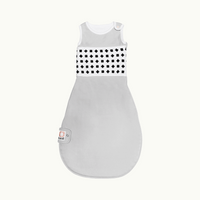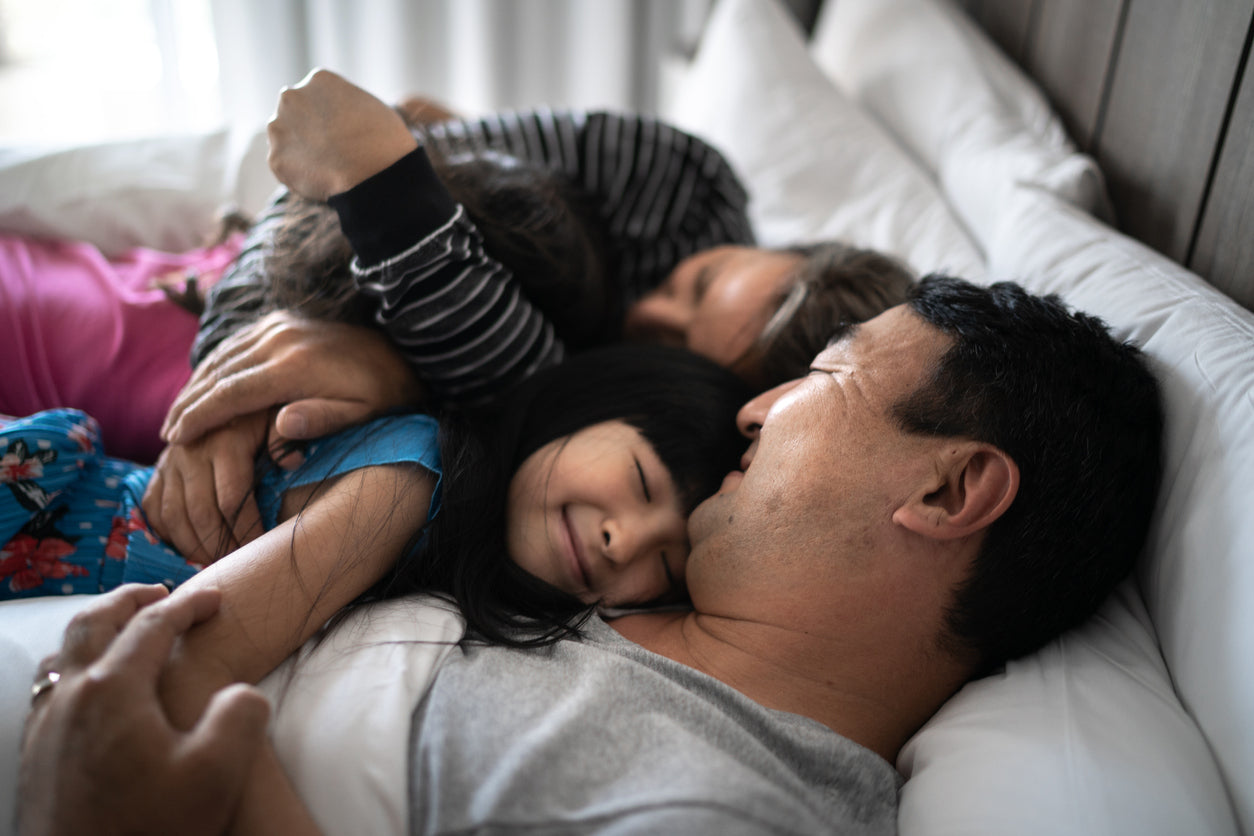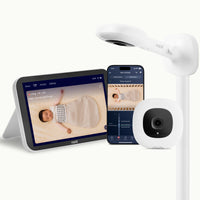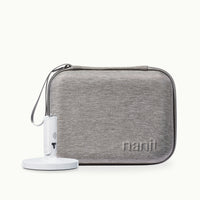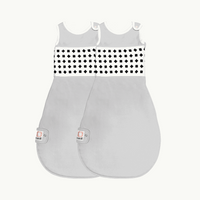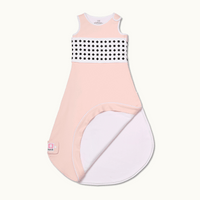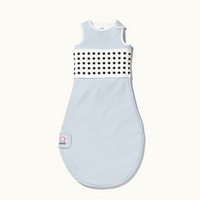Babies should always be placed on their backs come naptime or bedtime. But once they’ve hit certain milestones, they can begin to explore different sleeping positions. When can babies sleep on their stomach safely? Read on to learn the when and why behind the safest sleeping positions for your baby.
Is it safe for babies to sleep on their stomachs?
According to the American Academy of Pediatrics, a baby should always be put to sleep on their back during their first year of life. This is because stomach sleeping can affect your baby’s breathing, putting them at risk for serious conditions like Sudden Infant Death Syndrome (SIDS). To ensure your baby’s safety, lay your little one on their back for naps and bedtime. However, once your baby is capable of getting themselves onto their tummy or side (usually around 4 months), it is fine for them to stay there. You will always place them down to sleep on their back, but as they start to move around, they can move into the position that is most comfortable to them.
What are the risks if your baby sleeps on their stomach too soon?
There are several important reasons why it's important to put your newborn to sleep on their back, including:
-
SIDS. Babies who sleep on their stomach are at higher risk of breathing in their own exhaled breath and obstructing their airways, which can cause SIDS.
- Suffocation. Babies risk suffocating if they don’t yet have strength in their neck to lift their head away from the mattress.
- Rebreathing. Newborns sleeping on their stomachs may rebreathe air that’s trapped in the bedding, which can lead to low oxygen levels or carbon dioxide buildup. While most babies are fine, others may lose consciousness or experience other problems.
- Overheating. Babies can’t regulate their body temperature, and babies placed on their stomach to sleep are at higher risk for overheating than those placed on their backs.
- Aspiration. Babies that sleep on their stomachs run the risk of breathing in fluid from their spit up into their lungs.
When can babies start sleeping on their stomachs?
Babies shouldn’t be placed on their stomachs (or on their sides!) to sleep. Once they’re able to roll from their back to their stomach on their own, it's fine for them to stay on their stomach or side if that’s the position that’s comfortable for them. At this age, children without health concerns have enough strength to move from their stomach or their side to their backs and back again. Since they can move on their own, they’re much less likely to be at risk of rebreathing, SIDS, and the other risks we mentioned in this guide.
Are there benefits to your baby sleeping on their stomach (when they are of the safe age to do so)?
Once they’re old enough and strong enough to do so, there may be some benefits to your baby sleeping on their stomach, including:
- They may experience longer periods of deep sleep
- They may have a higher arousal threshold, so they’re less likely to wake up during the night
- They may be less likely to react to noise
These benefits may be attributed to your baby’s reduced moro reflex when they sleep on their stomachs. This internal “alarm system” causes babies’ arms and legs to flail in their sleep. If they flail less, they sleep for longer.
Aside from the potential benefits, your baby may simply find stomach sleeping more comfortable. Now that they’re old enough to roll over and pull themselves out of unsafe positions, there’s no reason to stop them or flip them back over, unless your doctor has advised you to do so.
Newborn stomach-sleeping FAQs
Understandably, you may have plenty more questions about your little one and how they sleep. This Q&A can help you get the facts behind the science (and art) of putting your baby down for a nap or for the night.
What do I do if my baby rolls onto their stomach while sleeping?
As your little one can easily roll from their back to their stomach, it’s OK to leave them on their tummy. But, if they’re not an expert on rolling over quite yet, you should reposition them onto their back. They might not prefer back sleeping, but most babies get used to it pretty quickly.
One tip from Dr. Natalie Barnett of Nanit Lab: “Help your little one get comfortable on their tummy when they get into that position by practicing tummy time during the day. This will help strengthen their neck and back muscles and help them feel comfortable in that position. In the middle of the night when they get themselves onto their stomach, they will then be more easily able to get into a comfy position and not be frustrated.”
Is it OK to put your baby down on their stomach?
Continue to lay your baby on their back when you put them to sleep. You should, however, lay your baby on their stomach when they’re wide awake to give them some “tummy time.” Laying them on their stomach for a bit during the day can help them strengthen those important neck, back and core muscles.
Will my baby choke if placed on their back to sleep?
No. Your baby has a natural reflex to swallow or cough up any fluids. When your baby lays on their back, their windpipe and trachea are on top of the esophagus, making it difficult for your baby to choke. However, they are at risk of breathing in fluid if they’re placed on their stomach before they know how to roll over.
Can my baby sleep on their side?
It's important to always put your baby to sleep on their back. But if they get themselves into a side position, it is generally safe for them to stay there. Any side or stomach sleeping until they’re an expert roller can increase their risk of SIDS and other complications.
What if my child doesn’t look comfortable sleeping on their back?
When it comes between choosing comfortability and safety, safety always comes first. If you continually put your baby to bed on their back, they’ll grow accustomed to that sleeping position. And if they wake up crying during the night, rest assured—it’s not because they’re uncomfortable. Crying during the night is normal for babies and can be attributed to hunger, temperature, feeling ill, or something else altogether.
Safe sleep tips for babies
Baby’s bedtime is not as simple as laying them on their backs and singing a lullaby. Read through these additional safe sleeping tips to ensure your little one is safely nestled in for the night:
- Create a sleeping environment just for them. A firm crib mattress, a fitted crib sheet with no pillow or blanket, and a toy-free sleeping space are all key to a safe sleeping environment.
- Don’t let your baby sleep in your bed. Although it’s OK to play with, hold, and feed your little one in bed while you are awake, they should be placed in a bassinet or crib when it’s time to nap or sleep for the night. The pillows and blankets on your bed can be a hazard to your sleeping baby.
- Create a smoke-free environment. Smoking during your pregnancy can increase the risk of SIDS. After your baby is born, the secondhand smoke can affect them, too. According to the U.S. Centers for Disease Control and Prevention (CDC), secondhand smoke appears to affect the area of a baby’s brain associated with breathing regulation.
- Dress your baby appropriately. Overheating can lead to SIDS. To ensure your little one is comfortable and cool, dress them in lightweight, breathable clothing for bedtime.
The bottom line
Placing your baby on their back to sleep is the safest option to reduce the risk of SIDS. Once they can safely roll onto their tummy, it is fine for them to stay there if they are comfortable. Practicing tummy time during the day while they are awake is the best way to get them prepared for moving around in the crib and building up those all important neck and back muscles.
Keep in mind how your baby’s sleep environment and clothing affect their sleep, too. Lightweight, comfortable breathing pajamas and sleep sacks are great options for keeping your baby comfortable and sleeping soundly.
















